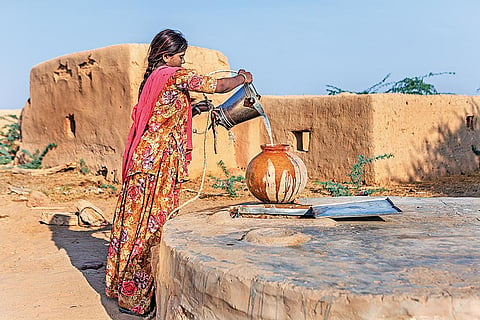Mitigating and adapting to adverse health effects due to climate change requires a multifaceted approach that encompasses planning and regulatory actions, economy, infrastructure, technology and communication.
Whose Climate Is It Anyway?
The proper implementation of a climate action plan will require cooperation among governments, health-care providers, scientists as well as communities
The health-care ecosystem in India encompasses a series of interconnected activities and stakeholders involved in developing health-care services. There are distinct differences between rural and urban health-care value chains, due to variations in infrastructure, access to health-care services and the prevalence of health-care facilities.
The proper implementation of a climate action plan will require cooperation among governments, health-care providers, scientists as well as communities.
Planning and Regulatory Action
The first step is to carry out risk assessment and mapping. Authorities will need to identify vulnerable populations and regions at high risk of climate-related health consequences such as heatwaves, flooding or vector-borne diseases.
Authorities will also need to come up with heat action plans that include early warning systems, cooling centres and public education to protect vulnerable populations from heat-related illnesses and deaths. To increase resilience against climate-related shocks, there is a need to put into practice long-term strategies for supply chain management, workforce training and health-care infrastructure.

Economic Action
Money needs to be allocated for the building and remodelling of health-care facilities with a focus on designs that are climate and energy resilient. Further, vulnerable and marginalised communities will need financial support for climate adaptation measures including better housing, access to clean water and health care.
Authorities will also need to implement carbon pricing systems to promote emission reductions and allocate funds for projects that promote climate resilience in health care.
Green Infrastructure
In order to reduce the creation of urban heat islands and enhance air quality, there is a need to create and maintain parks, urban woods and green areas. There also needs to be continuity of care during catastrophes by retrofitting current health-care facilities to resist severe weather conditions and power outages.
To secure dependable and clean water sources and lower the risk of waterborne illnesses during climate-related disruptions, authorities need to upgrade the infrastructure for water and sanitation.
Crisis Communication
Public-awareness campaigns will go a long way in mitigating the immediate impact of climate events. Such campaigns should be initiated to inform the public about the health hazards posed by climate change and encourage the use of protective measures.
It is also important to establish clear and accessible communication routes for the dissemination of vital health information during climate emergencies.
Initiatives in India
In India, efforts to combat climate change have generally centred on fostering connections between human development and environmental results. The Energy Conservation Act, passed in 2001 and amended in August 2022, is now in effect.
Consumers must now meet their energy needs from non-fossil sources, and businesses and residential buildings must now adhere to the Energy Conservation Building Code, which specifies energy consumption rules for ships and automobiles, among other modifications.
India has created missions and plans to lessen its climatic vulnerability. The National Action Plan on Climate Change (NAPCC) was published on June 30, 2008.